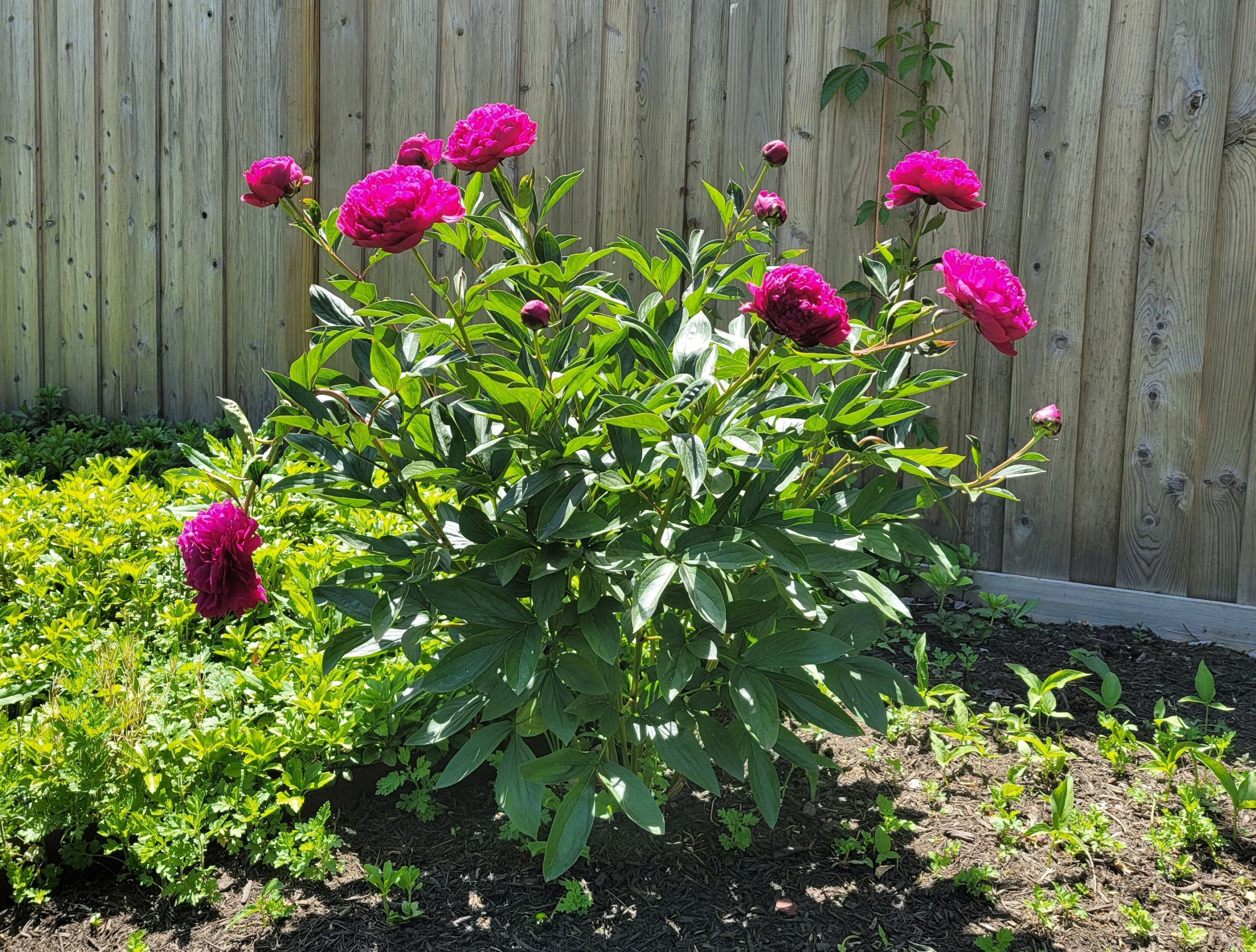List of deer resistant perennials
Here is a list of field-tested deer resistant perennials for the Northeast region. Perennials are herbaceous plants that will come back year after year. If you do not have 7 ft fence around your property, your choice of perennials will be limited. Many of them are available in local nurseries or from online stores such as jungseed.com. Of course, there is no such thing as “deer-proof plants”. They do not like to eat these perennials if they have other plants to eat. They will eat even poisonous plants if they are hungry enough.
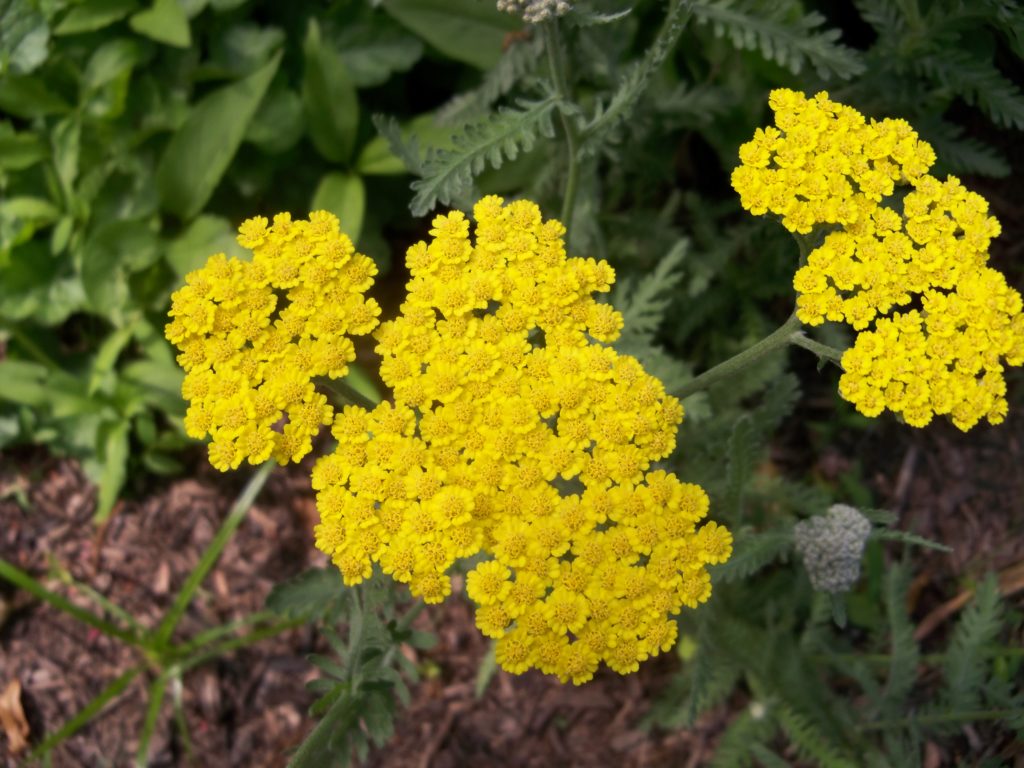
Achillea millefolium (Yarrow). Zones 3-8, full sun or part shade. Yarrows grow to a height of 18-30 inches, depending on cultivars. They are known for their aromatic finely textured leaves and flat-topped clusters of florets with colors from yellow to red. Yarrows are deer and rabbit resistant, and drought tolerant. Tall ones need support. After blooming, cut the stems to half the height to encourage reblooming. In early fall, cut off the old stems to encourage basal growth. Learn more about yarrows.
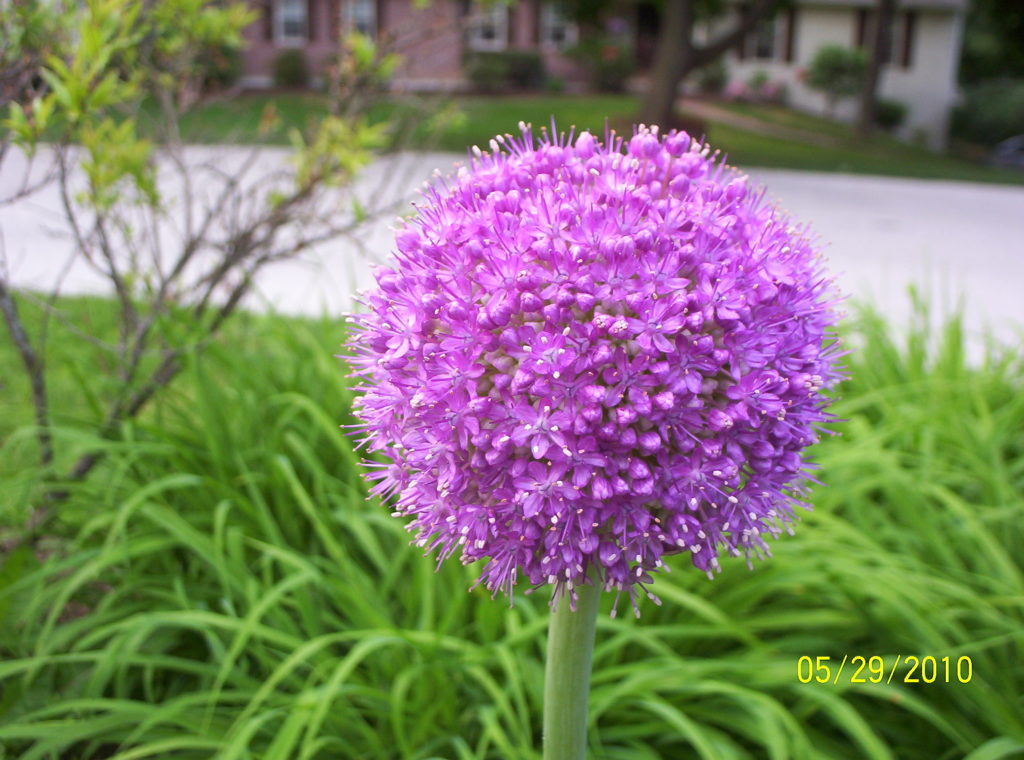
Allium (Ornamental onion). Zones 3-8, full sun. This carefree, drought tolerant plant is a pretty member of the onion family. Allium is available as a bulb for fall planting. In late spring, it produces a huge sphere made up of hundreds of purple florets on a 3-4 ft stalk, often before leaves turn yellow. The flowers last for several weeks. Various varieties are available, with color from blue to reddish purple and size of the sphere up to 10 inches in diameter. It is one of the good deer resistant perennials.
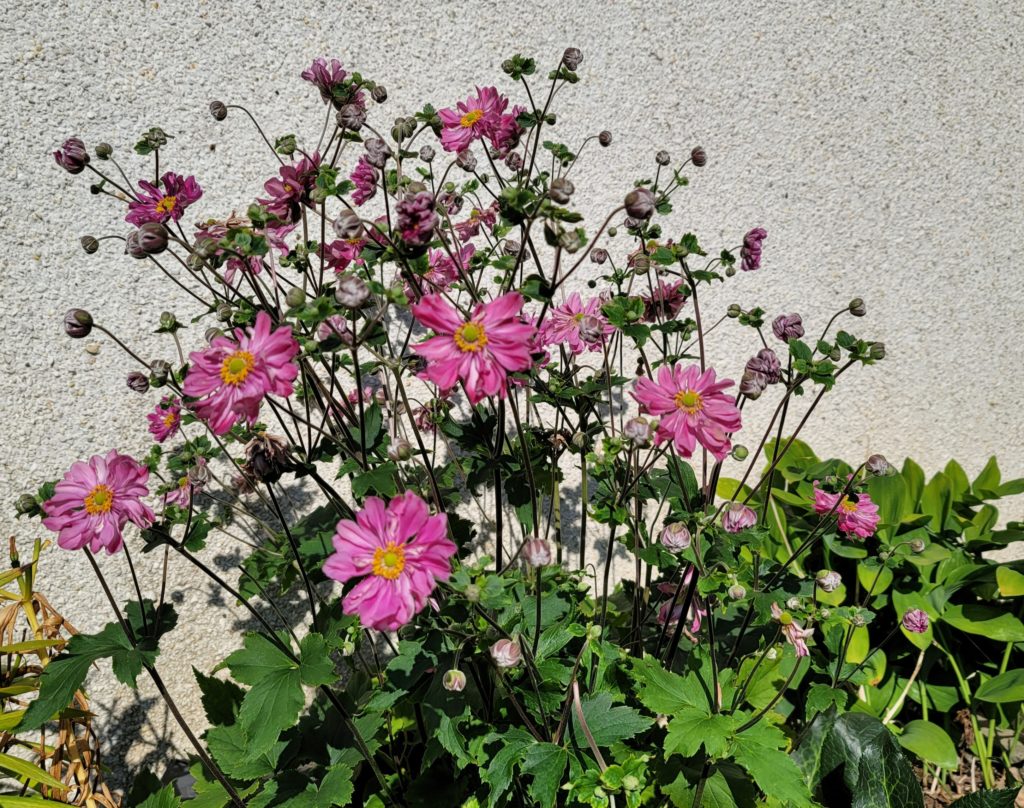
Anemone x hybrida (Japanese anemone or windflower). Zones 4-8, full sun to partial shade. This long-lived perennial produces single, double or semi-double flowers in pink, white or purple from late summer to early autumn, depending on variety. They grow to 2-3 ft tall, and spread by underground rhizomes. They are deer and rabbit resistant. Dead-heading prolongs blooming time.
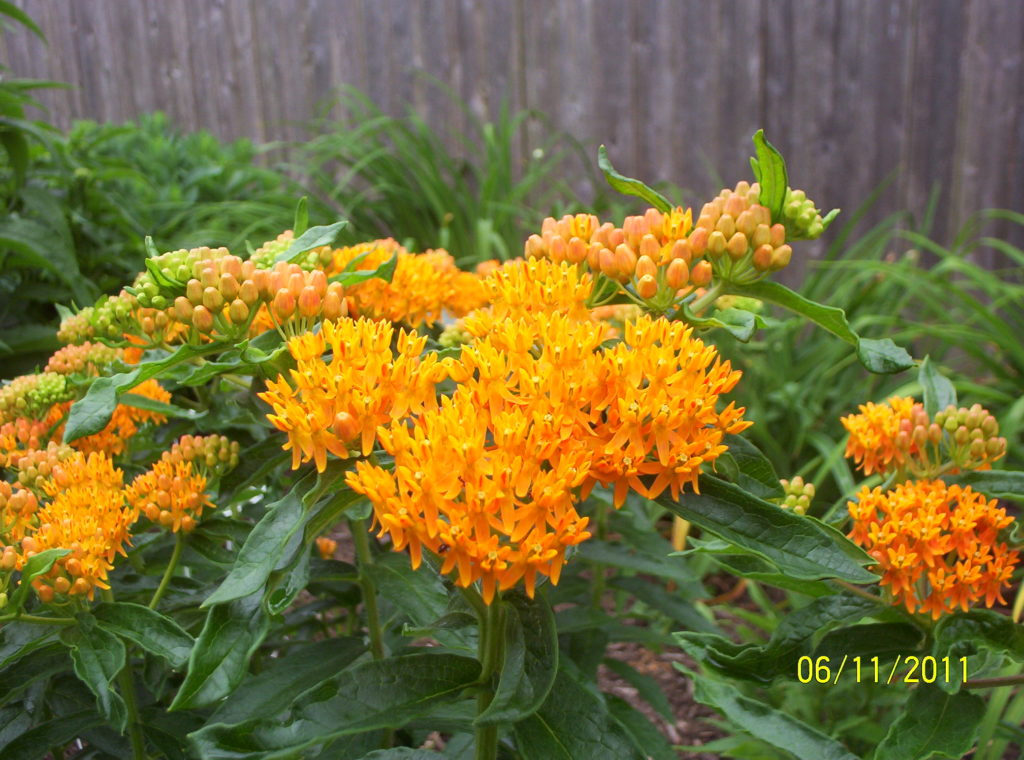
Asclepias tuberosa (Butterfly weed). Zones 3-9, full sun. Asclepias attracts butterflies, and is a carefree, drought tolerant plant will grow to 3 ft tall and produce clusters of either orange or yellow florets in July to August. It has taproot, so relocation is impossible. However, you can raise them from seeds easily. They tend to come up later in spring, so mark its location to avoid accidental planting something else. Deer don’t bother them.
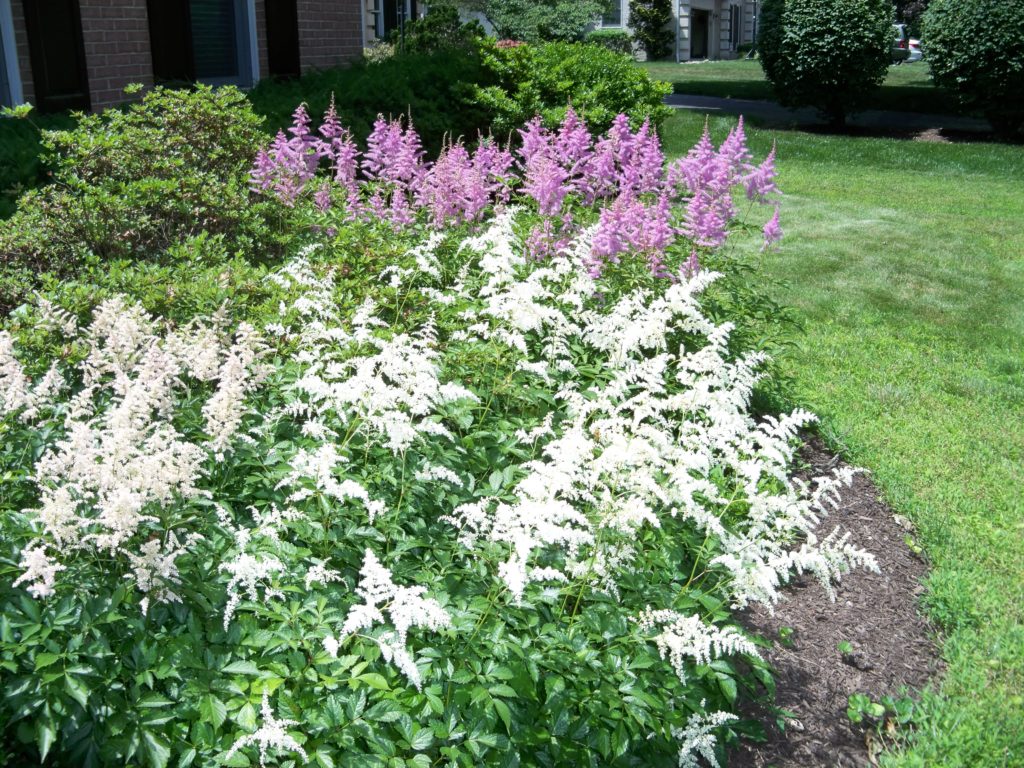
Astilbe chinensis (False Spirea). Zones 4-8, part to full shade. Astilbes grow to heights of 1.5 to 4 ft, depending on varieties. Tall ones can withstand more sunlight. A perfect plant for eastern or northern side of the foundation or next to a fence. They are known for ferny foliage and feathery flower spikes of various colors (white, lavender, pink, peach, and red) in mid-summer. Deer may eat some of their leaves in early spring, but rarely damage them severely. On the other hand, they do require watering in dry spell. They live for a long time without dividing. Learn more about astilbes.
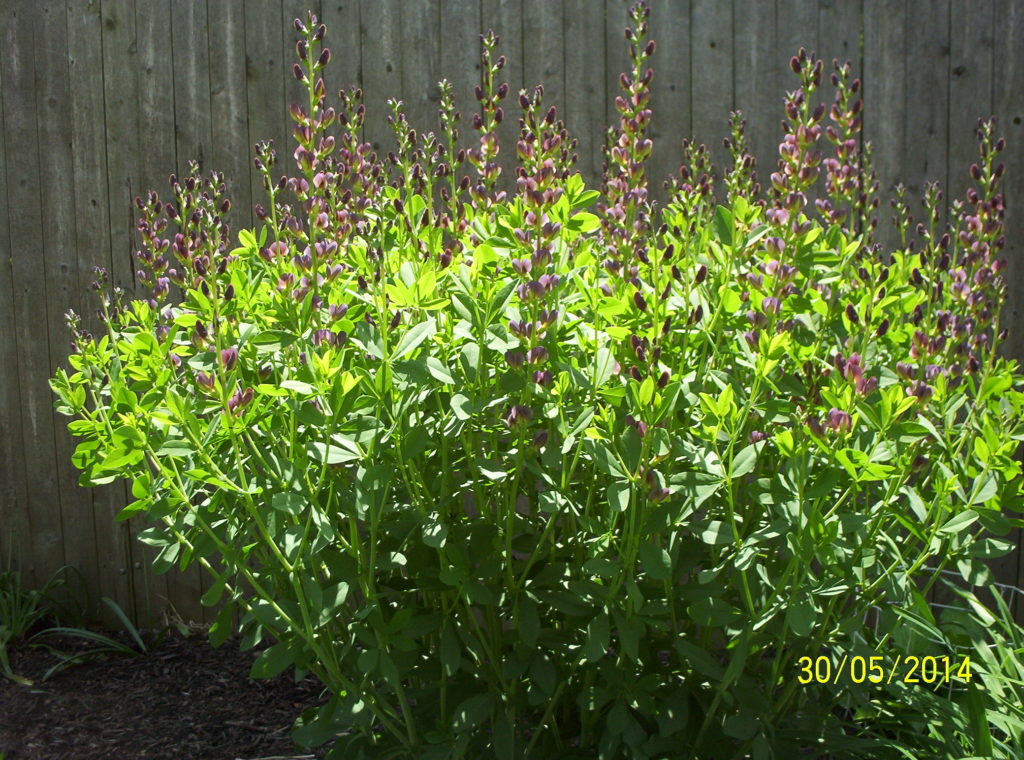
Baptisia spp. (False indigo). Zones 3-9, full sun. Baptisia is a deer resistant, drought tolerant plant can grow to 3-4 ft tall with multiple stems bearing many bluish-purple or yellow flowers in late spring. It has long taproot, so moving it is impossible. Its stems tend to bend forward in late summer and will shade neighboring plants if not supported. Care is minimal, just cut the stems back to 6 inches in spring.
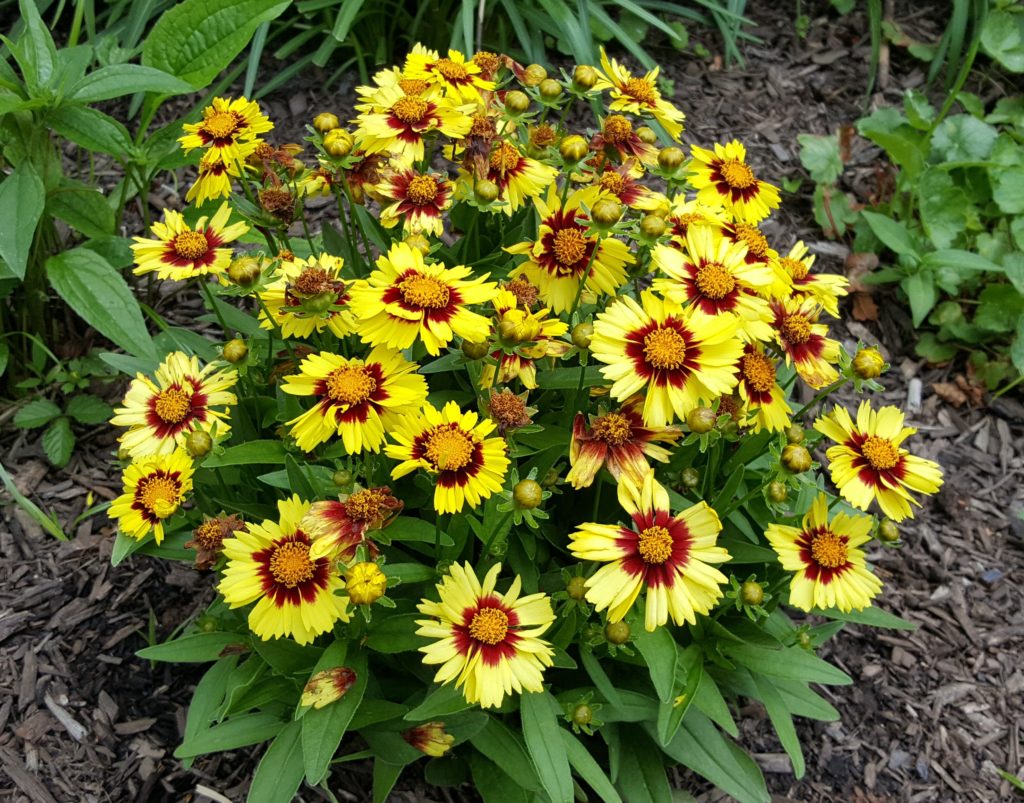
Coreopsis (tickseed). Zones 4-9, sunny, various height depending on variety. Tickseed is native prairie flowers that can stand poor soil and hot sun. They are deer resistant and drought tolerant. They have yellow to red flowers and bloom from early summer to frost. Shearing off the spent flowers can encourage them to rebloom. They are short-lived, but can spread by rhizomes and self-seeding. Two main types: C. grandiflora has lance-like leaves and C. verticellata has thread-like leaves. Picture shown above is C. grandiflora named Sunkiss, 12-14 inches tall.
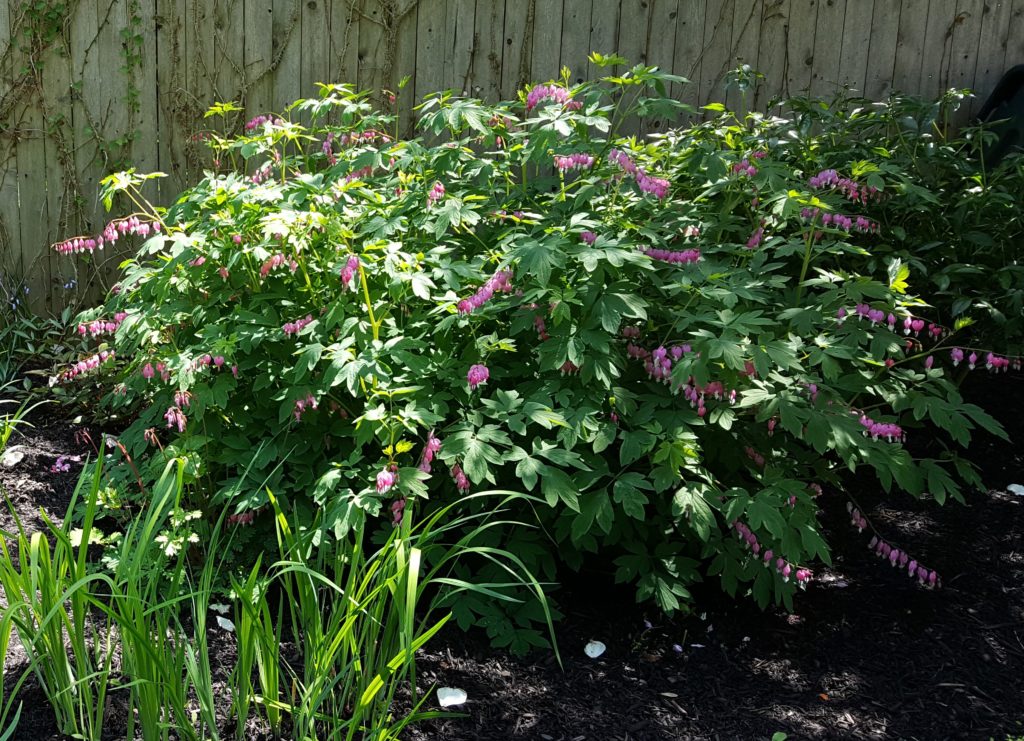
Dicentra spp. (Bleeding heart). Zones 3-9, part to full shade. There are two types, giant and dwarf. The giant bleeding hearts (24-36 inches tall) have white, pink or rose-pink heart-shaped flowers in May or June. They may go to dormancy in summer. The dwarf bleeding hearts (12 inches tall) have yellow or red flowers. They tend not go to dormancy in summer if given adequate moisture. Deer and rabbits do not bother them.
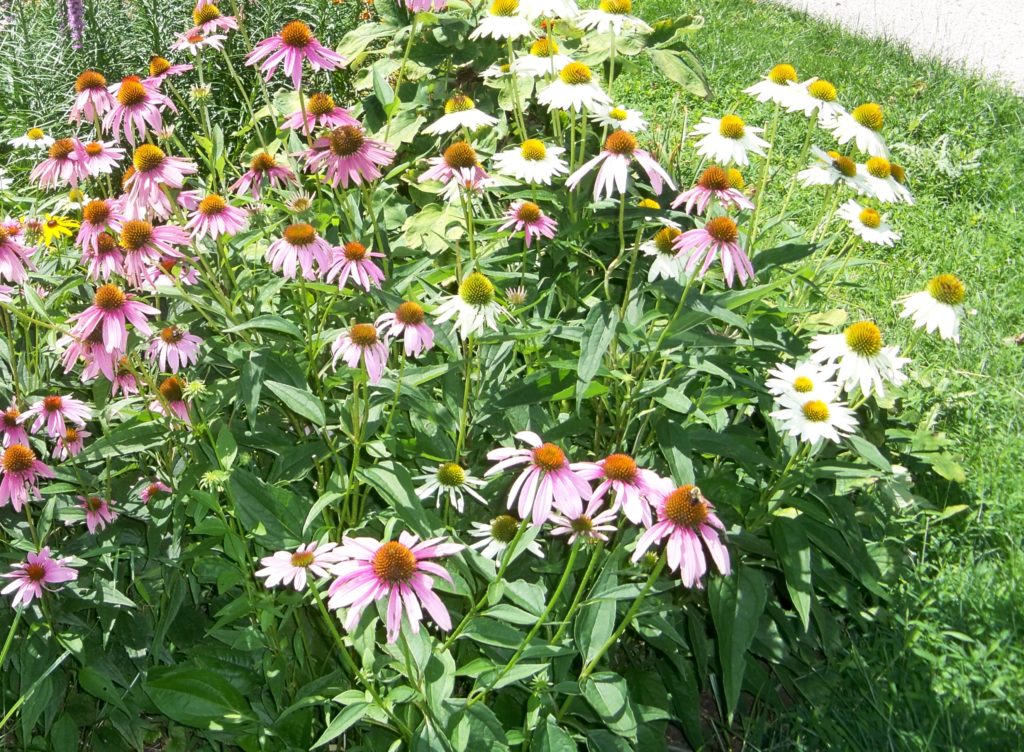
Echinacea spp. and hybrids (Coneflower). Zones 3-8, full sun, but can withstand some shade. The common varieties are 3 ft tall and produce purple or white daisy-like flowers on sturdy stems from mid-summer to frost. New varieties with shorter height and a spectrum of colors (from yellow to red) are now available. Hungry deer may eat their flower buds in early spring, but they seldom severely damage the plant.
Coneflowers are drought tolerant. Dead-heading will prolong the blooming period. In fall, cut old stems back to 6 inches to promote basal growth. Learn more about coneflowers.
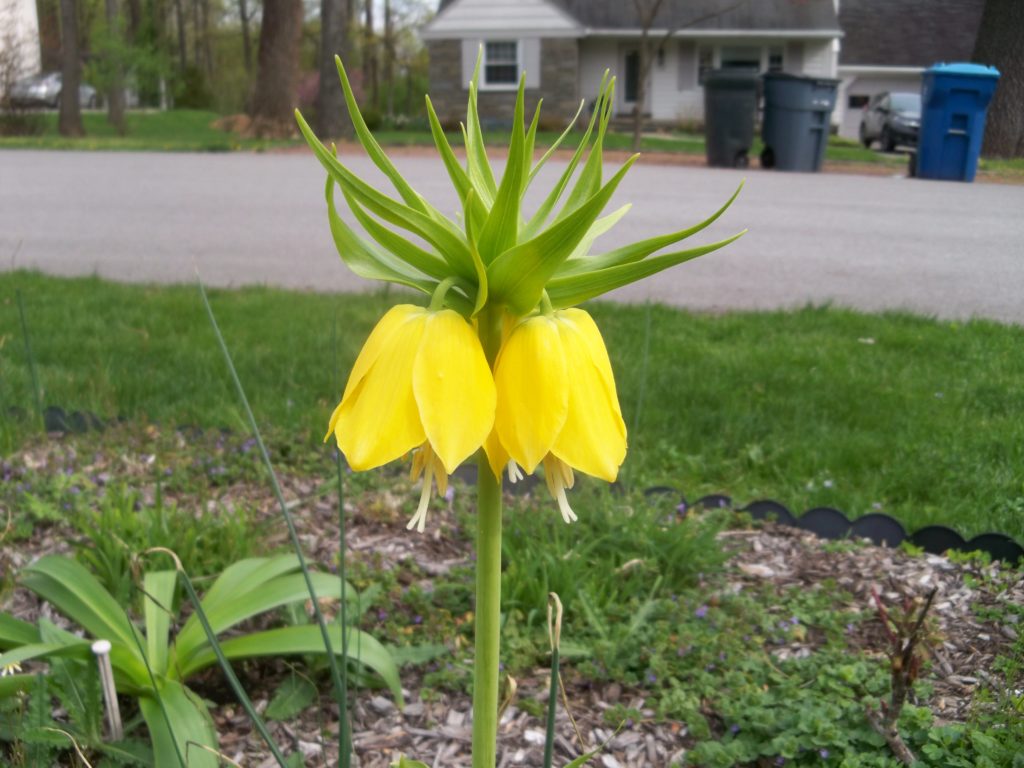
Fritillaria imperialis (Crown Imperial). Zones 3-8, full-sun but can stand some shade. Its height varies depending on variety. Crown Imperial has pendant shaped flowers in red, orange or yellow with a crown of small green leaves on top. It is available as a bulb in fall, and blooms in mid-spring. It may become dormant in summer and reappear in next spring. However, it is short-lived. This pretty plant has an odor like skunk, making it one of the best deer resistant perennials.
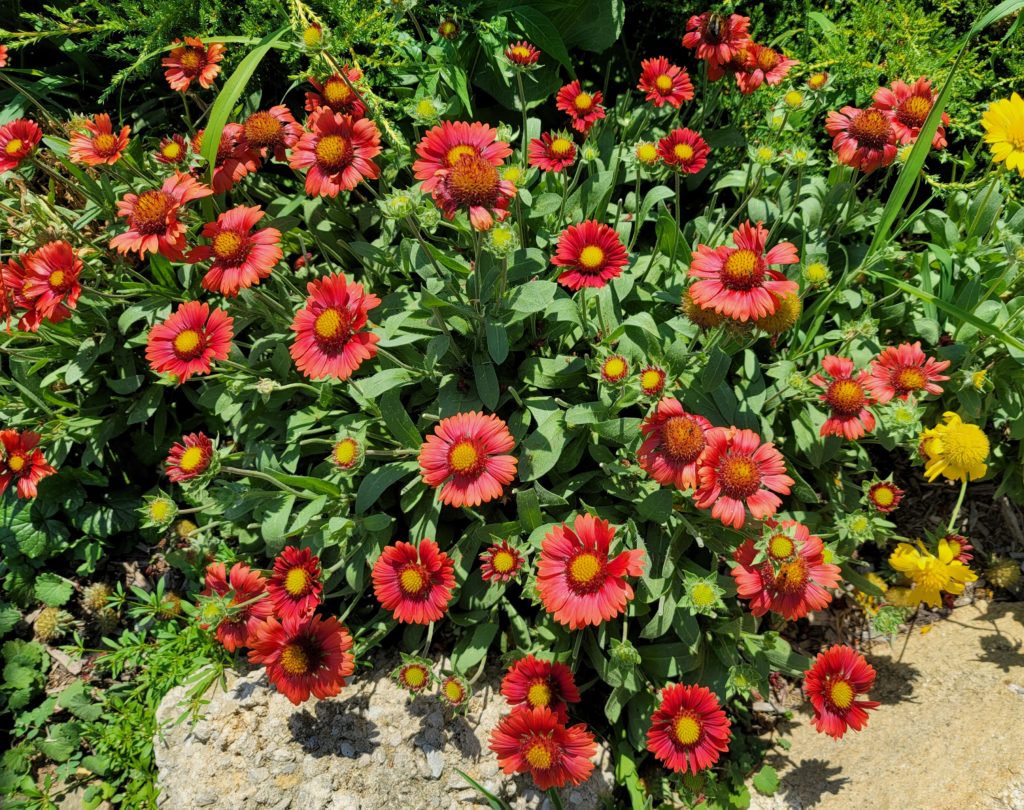
Gaillardia x grandiflora (Blanket flower). Zones 2-10, full sun to part shade. This drought and deer resistant perennial is 10-12 inches tall and wide, and is easy to grow from seeds. It blooms on the second year from early summer to fall. It is one of the long blooming deer resistant perennials. Just shear off the spent flowers to encourage rebloom. However, it is short-lived, and requires division every 2-3 years in spring or early fall for rejuvenation.
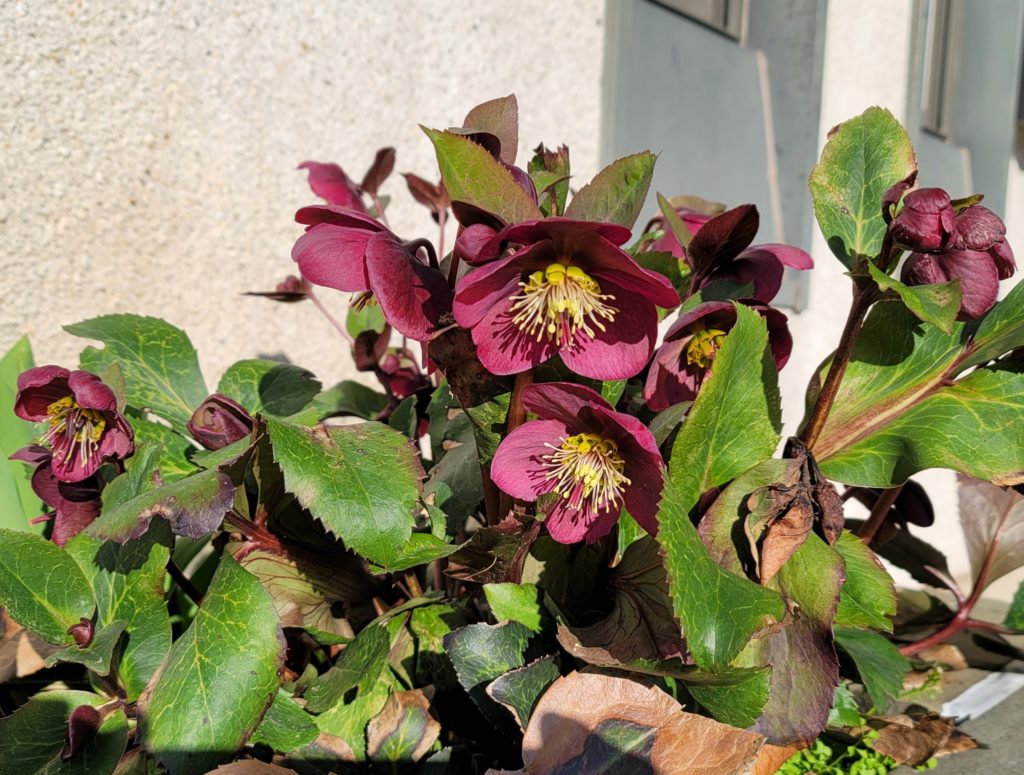
Helleborus x hybridus (Lenten Rose). Zones 4-9, partial to full shade, 12-18 inches tall and wide. They bloom in late winter to early spring. The flowers are 2-3 inches wide with a variety of rich colors and last 6-8 weeks. Their deep green foliage remains evergreen. They are resistant to deer and rabbits and are carefree. Just cut off the flower stalks after blooming.
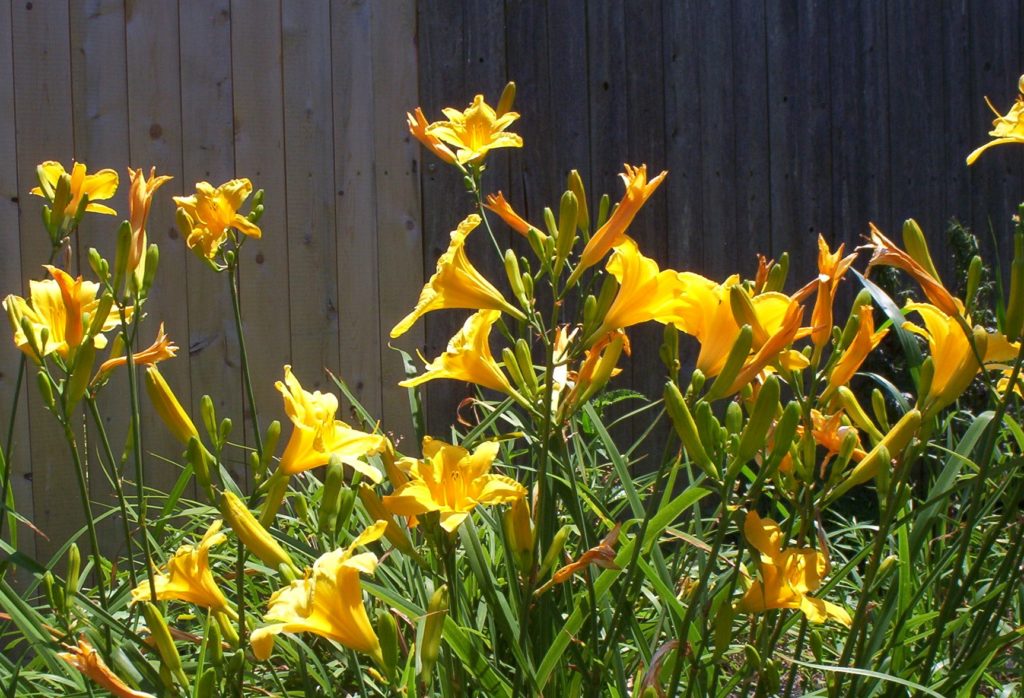
Hemerocallis spp. and hybrids (Daylily). Zones 3-11, full sun to part shade. Daylilies are generally 24-36 inches tall and produce flowers of different colors in early summer, depending on variety. Although each flower lasts only for one day, hence the name, they will put up a show of several blooms on top of each flower stalk. Some cultivars, such as Happy Returns and Stella de Oro, rebloom in late summer.
Deer seldom eat the grass-like leaves, but they love to eat the flowers and flower buds. The only exception is Stella de Oro, which was bred for deer resistance. Daylilies are drought resistant and carefree. Just cut off the flower stocks to prevent formation of seed pods to conserve energy. In late fall or early spring, remove the brown leaves. Learn more about daylily.
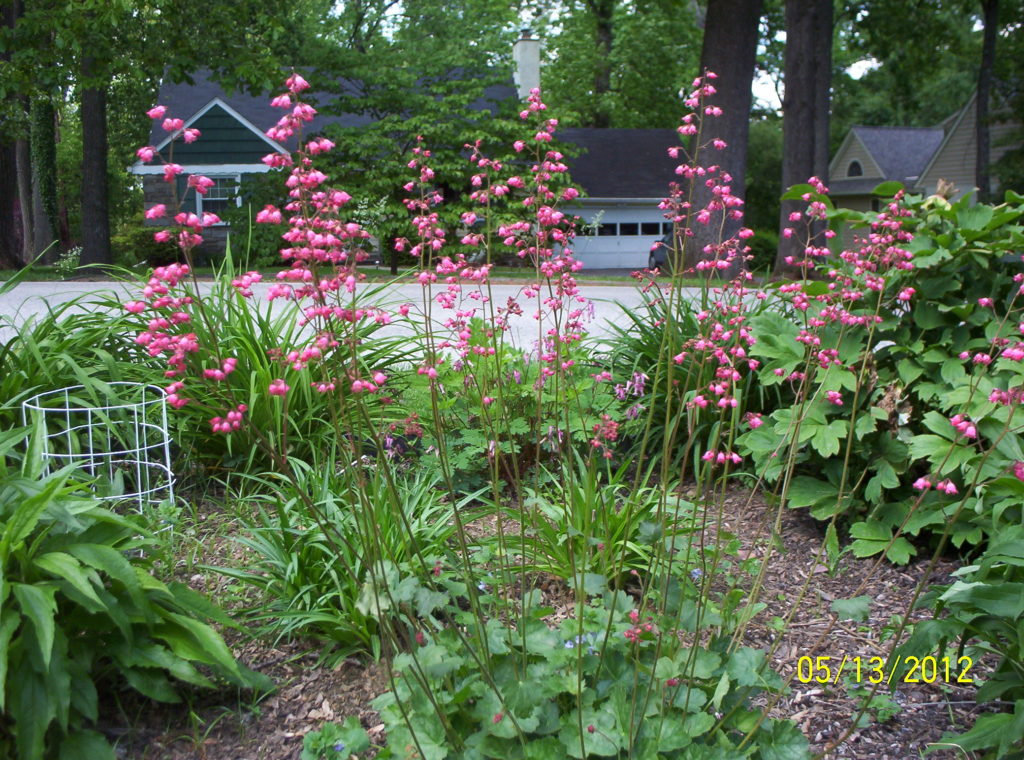
Heuchera spp. (Coral bells). Zones 4-9, full sun to part shade. Coral bells are low growing perennials with dense mounds of colorful (gold, green, red, purple or black-purple) scalloped leaves and tall spikes of dainty bell-shaped flowers from June to August. The flowers last for weeks. They can live for a long time without dividing. They may need some watering during dry spell. Deer sometimes eat their leaves, you may want to protect them with wire cage.
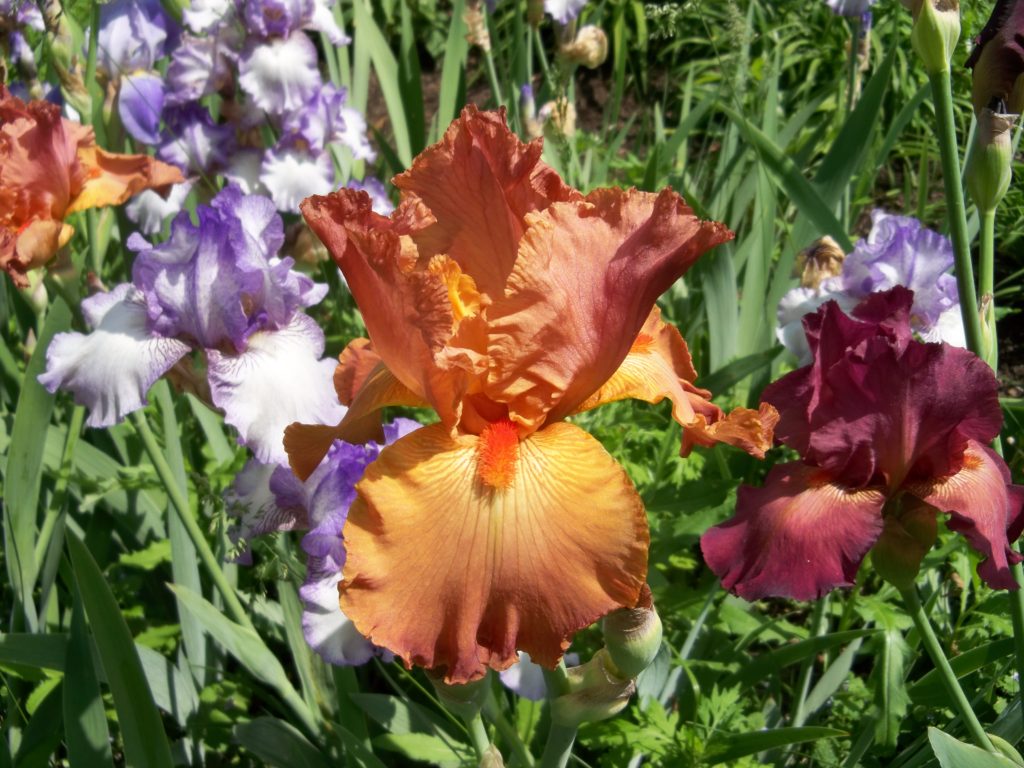
Iris germanica (Bearded iris). Zones 3-9, full sun. Bearded irises have sword-like leaves and huge flowers with a rainbow of color in early spring. They are 24-36 inches tall, and are easily grown in well-drained soil. They do require weeding from time to time, as weeds often grow in-between the rhizomes. Irises are deer tolerant, although deer may eat the flower buds in rare occasion. Maintenance is minimal, just cut off the flower stalk when it finishes blooming to prevent diversion of energy to form seeds. Learn more about irises.
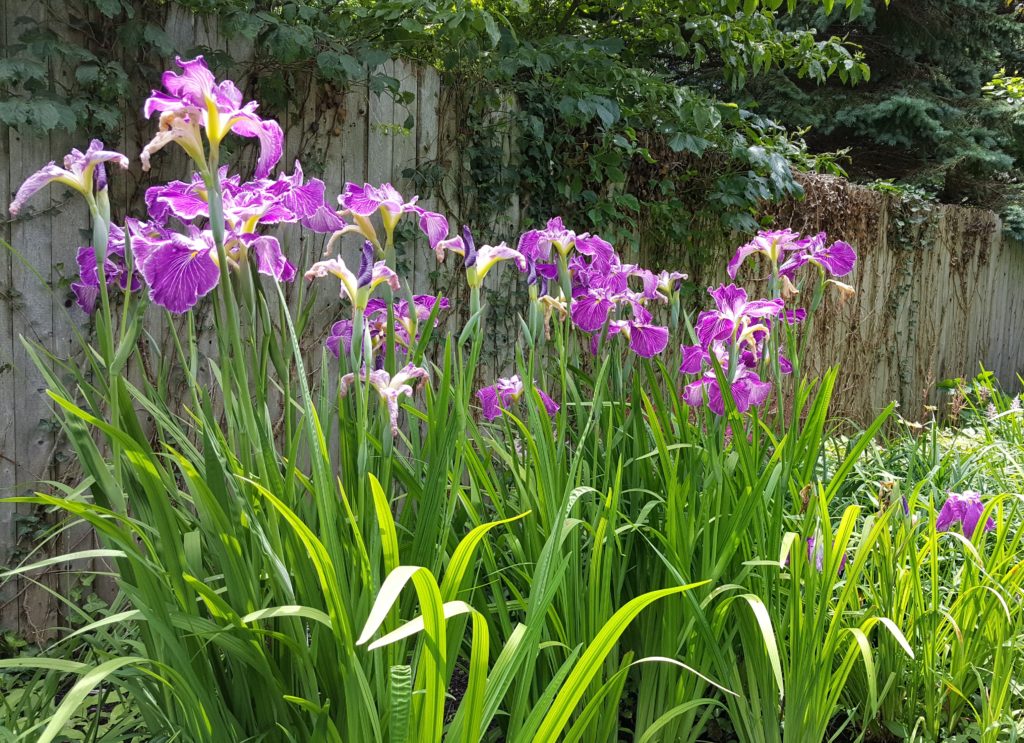
Iris ensata (Japanese iris). Zones 4-9, full sun to part shade. Japanese irises grow to 2-3 ft tall, and bloom in June or July. The flowers are huge, blue to purple. Unlike bearded iris, they tolerate wet soil. Deer seldom eat their leaves or flowers. Care is minimal, just cut off flower stalk when it finishes blooming. In the fall, cut off the top half of the leaves to prevent them from flopping. Learn more about irises.
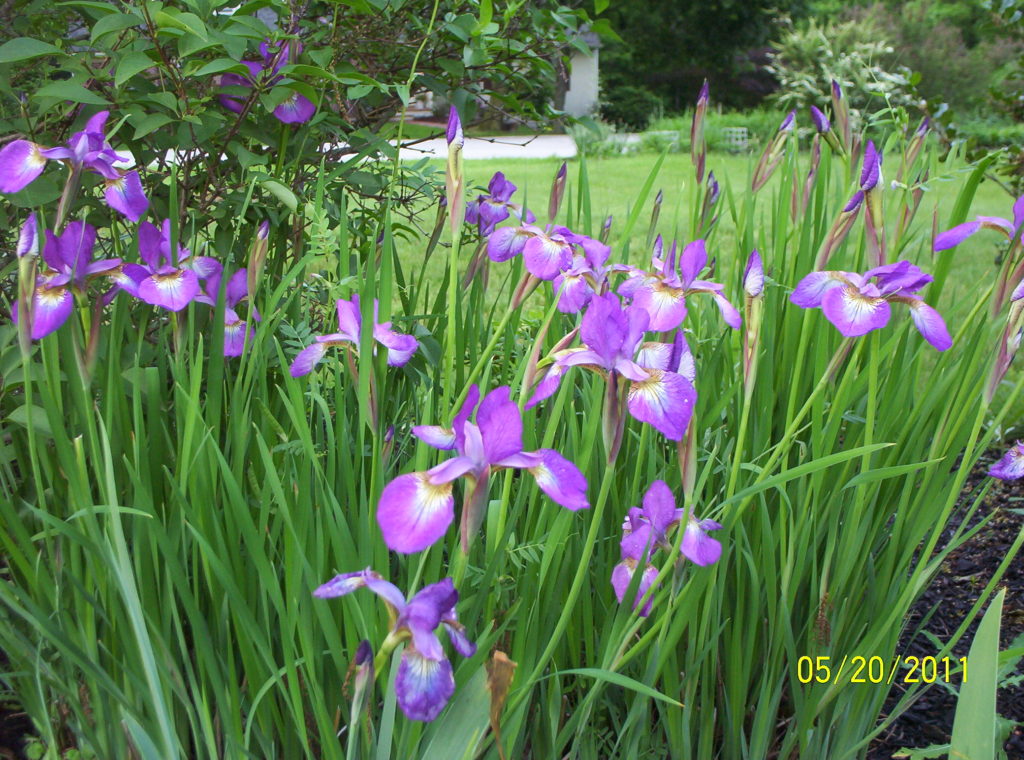
Iris sibirica (Siberian iris). Zone 3-9, full sun to part shade. Siberian irises are the most carefree iris with blue, purple, yellow and white flowers. They grow to 2-3 ft tall, and are deer resistant. However, their roots tend to rot in wet soil in winter. In late fall, cut the top halves of the leave off to prevent them from flopping. Learn more about irises.
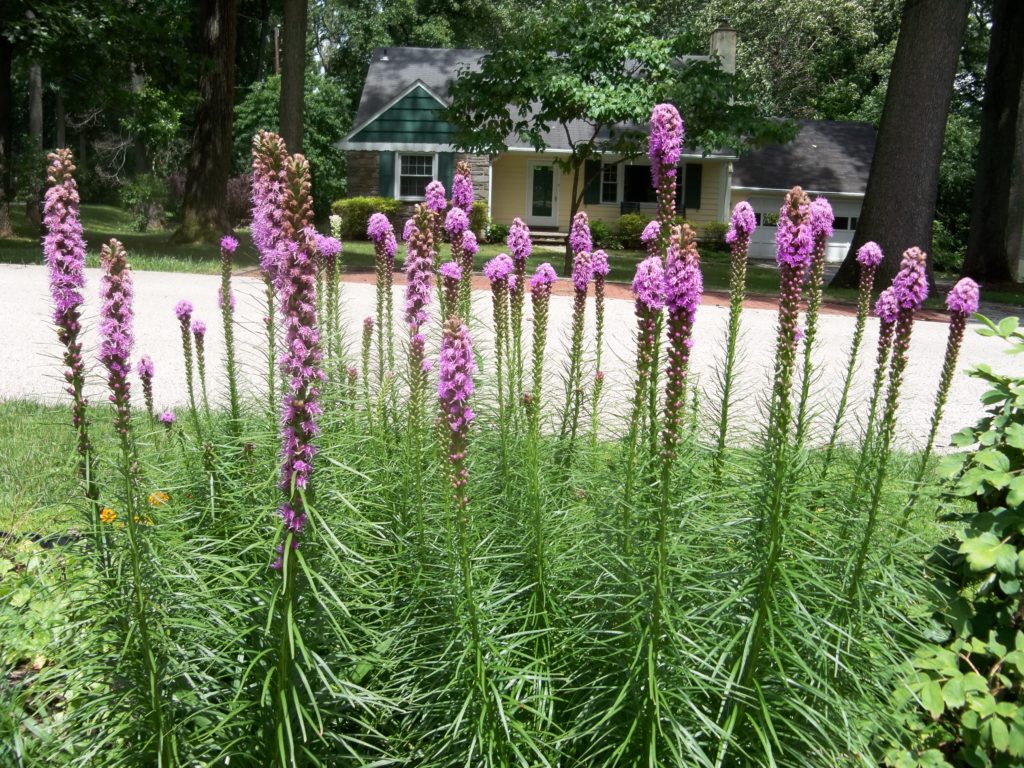
Liatris spicata (Blazing star). Zones 3-9, full sun. Liatris grows to 2-3 ft tall, and have long flower spikes with either white or purple florets like a giant Q-tip that last from mid-summer to fall. They are deer and drought resistant. Care is minimal, just cut off the spent flowers to prevent seed formation. When they die back in fall, cut the stems back to 6 inches. To rejuvenate them, divide them every 2-3 years.
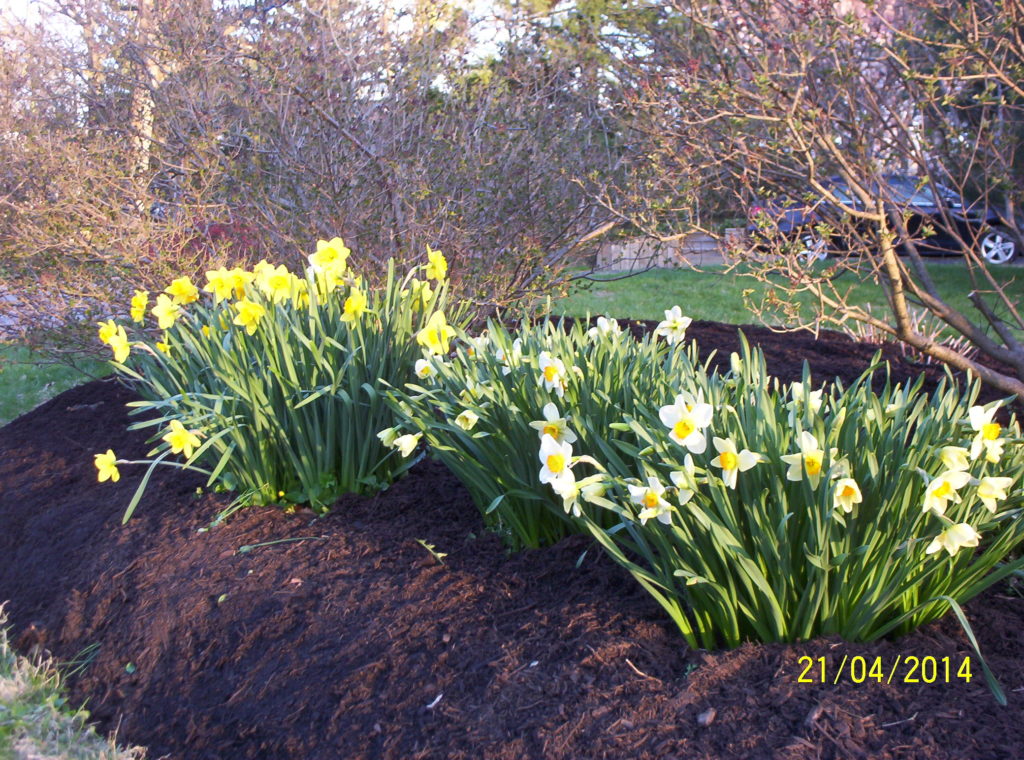
Narcissus spp. (Daffodil). Zones 3-8, full sun to part shade. Daffodils are one of the flowers that welcomes the arrival of spring. Their flowers have yellow or orange trumpet-like cups surrounded by white or yellow petals. They grow to 18 inches tall, and miniature type grows to only 6 inches. Daffodils are available as bulbs. You can plant them in late fall for spring blooms.
Caring is minimal, just cut off the spent flower and leave the leaves to produce energy for next year’s bloom. Remove the leaves when they wither. You can leave the bulbs in ground over the winter, and they multiply year after year. When they are overcrowded, dig them up and replant in lower density. Otherwise they will refuse to bloom. They are poisonous, so deer will not touch them.
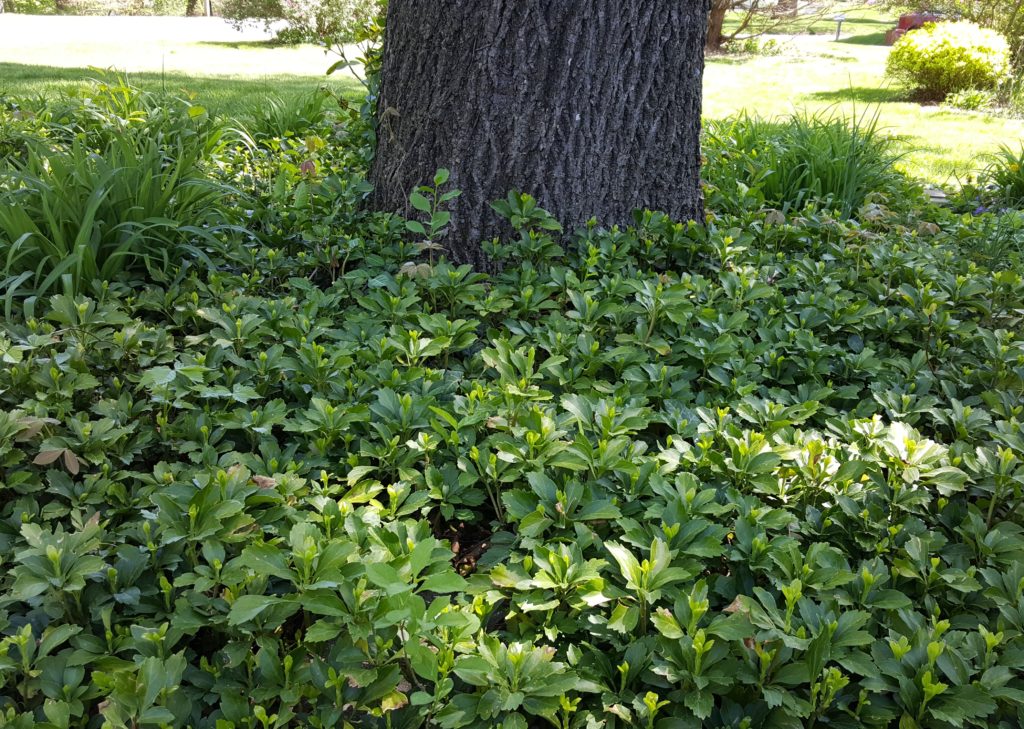
Pachysandra terminalis (Japanese Pachysandra). Zones 5-9, part-shade to full-shade, but can tolerate some sun. Pachysandra grows to 6-12 inches tall, and will not climb up tree trunks or fence like ivy. They are perfect evergreen ground covers for areas under trees. Once established, they will eliminate mulch around the trees. They also require little care except a little watering during long drought spell. They are resistant to deer and rabbits.
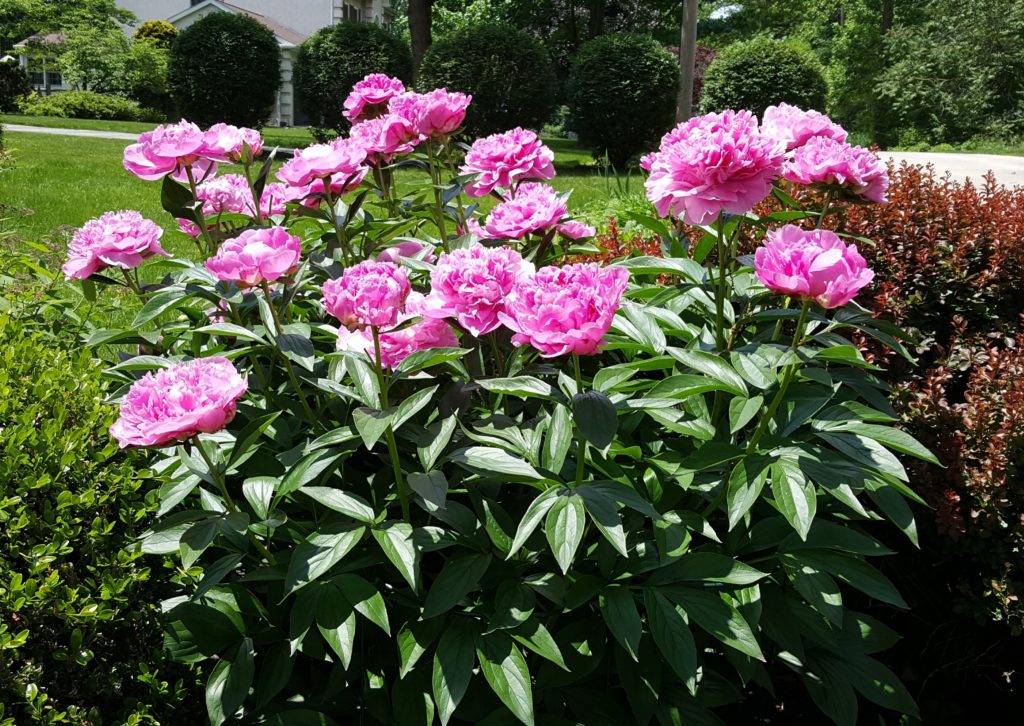
Paeonia lactiflora (Herbaceous peony). Zones 3-8, full sun to part shade. Peony grows in clumps to about 36 inches tall, producing many huge flowers in June. In fact the flowers are so huge that the stems cannot support them especially after rain, they flop over. So it is wise to buy from an online store for a cultivar with a description of “strong stems”. You may remove side flower buds to produce bigger bloom (as shown in the picture above). The flowers attract ants, do not plant peonies close to your house.
Peony requires little care. Just remove the spent flowers promptly to avoid a mess. In the fall, cut the withered stem closed to the ground and dispose them as trash (do not compost) to avoid spread of mildew. They are one of the best deer resistant perennials.
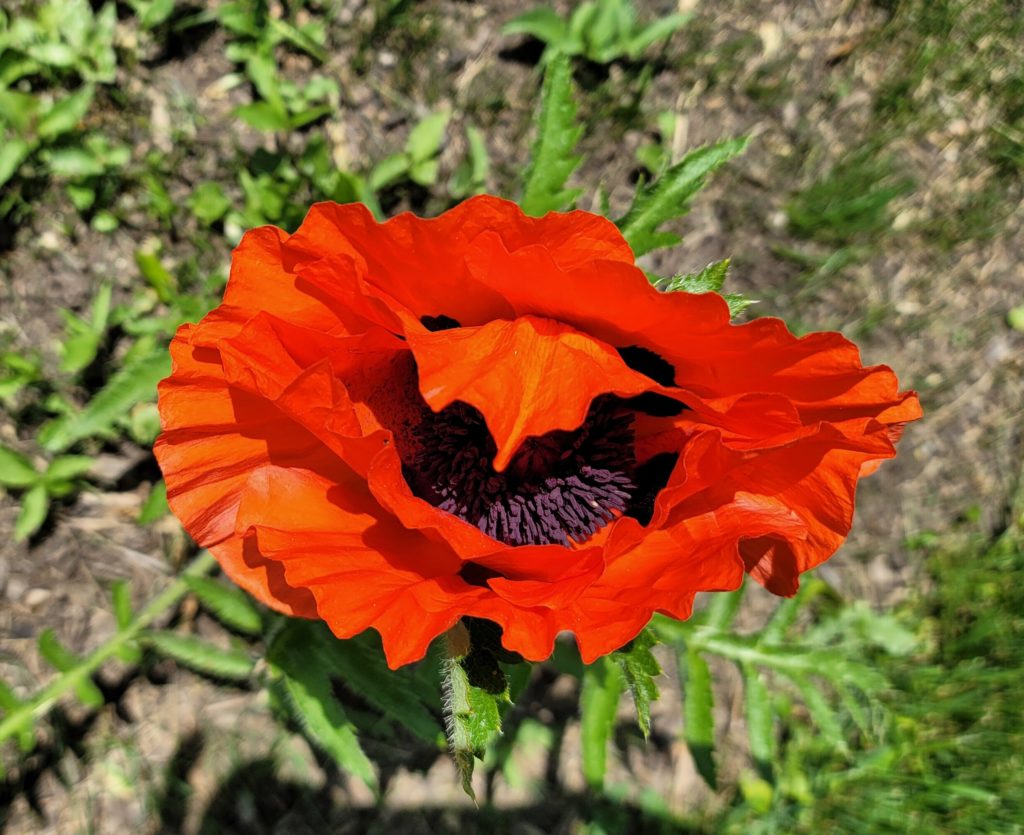
Papaver orientale (Oriental Poppy). Zones 3-9, full sun, 1-3 ft tall and 1-2 ft wide. Oriental poppy is famous for its large (6 inches across) brightly colored flowers with crepe paper-like petals. It blooms in late May and dies back in summer. Dead-heading will not produce more blooms. New growth begins again in fall and may stay through the winter. It has long tap root, and does not like to be moved around. However, division can be done in early fall when the clump gets too big. Broken root that remains in the ground can produce a new plant next spring. Deer do not bother them.
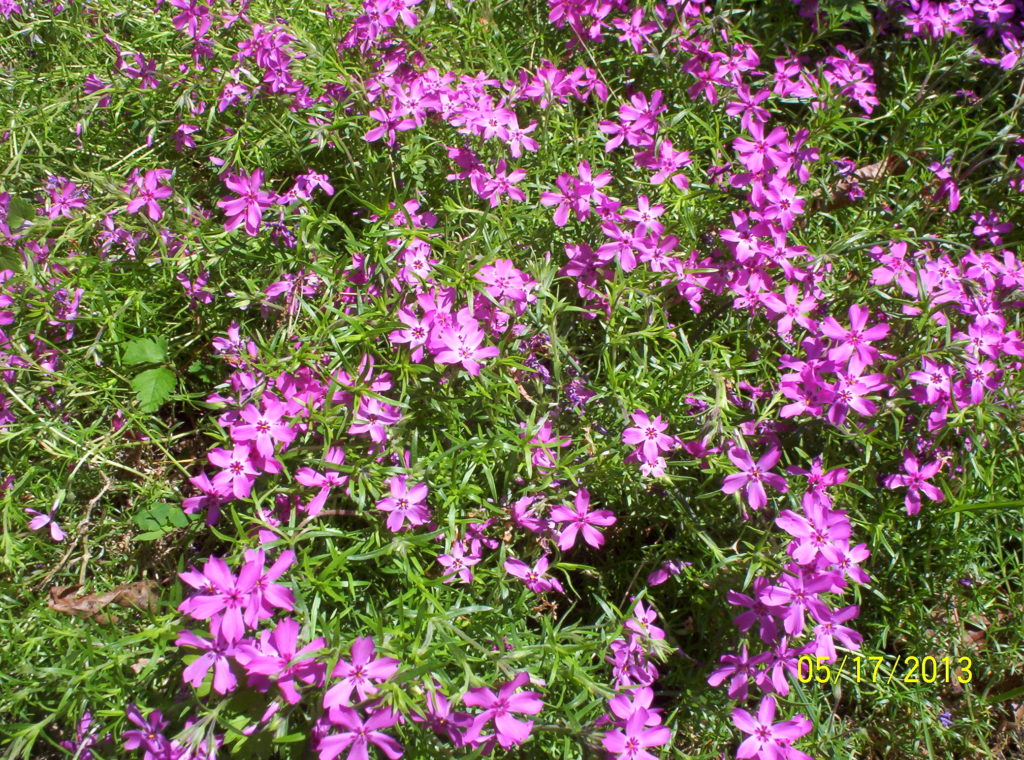
Phlox subulata (Creeping Phlox). Zones 3-9, full sun. Creeping phlox forms a mat of 24-inch spread and 4-6 inch tall. The leaves are needle-like and semi-evergreen. They bloom in early spring, with tiny flowers in blue, pink, red or white. They are good sunny ground cover in rock garden and slopes, but may require hand-pulling weeds that grow through them. Deer may eat them when no other food is available in early spring.
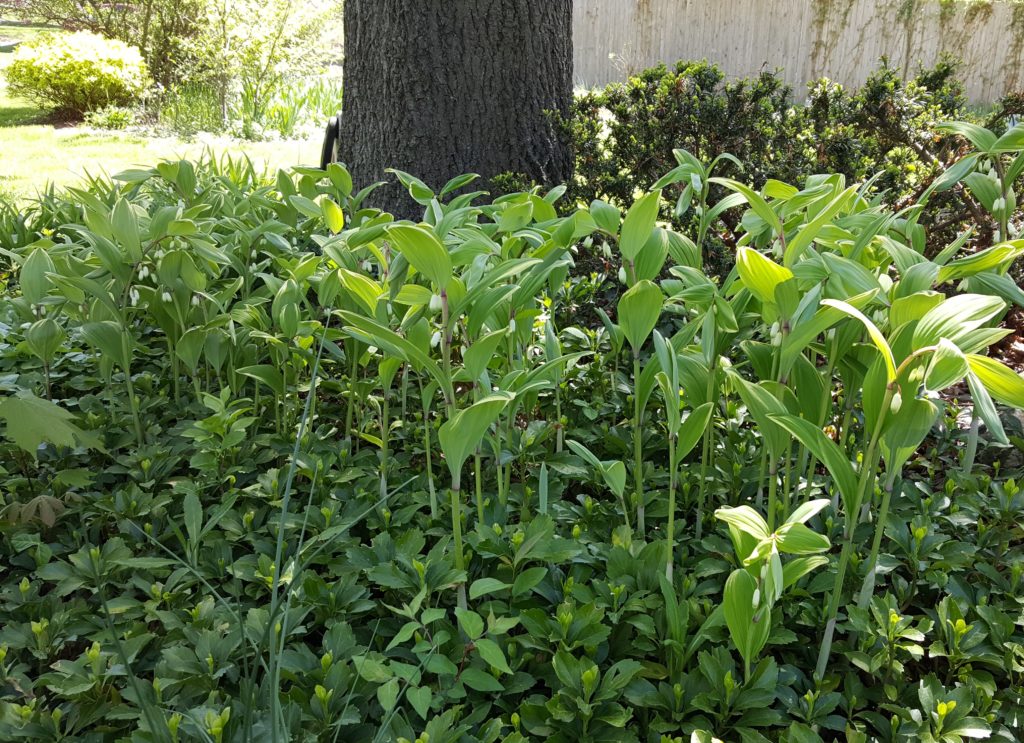
Polygonatum odoratum (Solomon’s Seal). Zones 4-9, part-shade to full-shade. Solomon’s seals will grow to 15 inches tall, and bear rows of bell-like flowers that dangle beneath arching stalks in spring. In autumn, their leaves turn golden yellow. They add interest in a shady garden, and are carefree once established. They are not listed as one of deer resistant perennials, but deer have never severely damaged them in my garden.
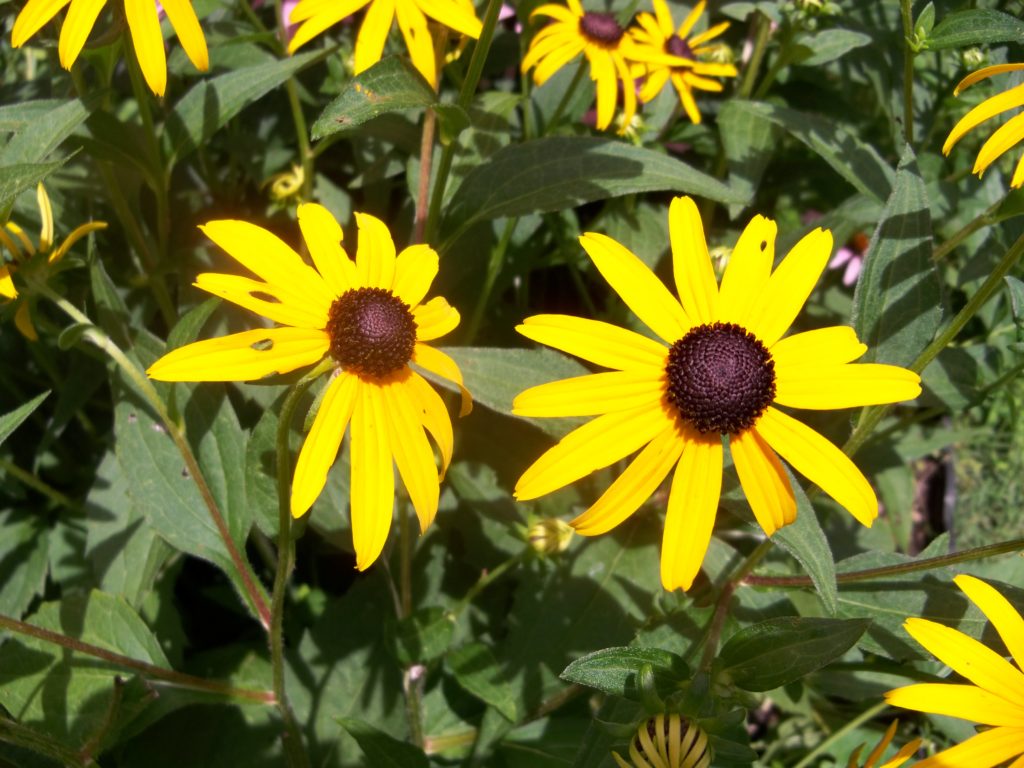
Rudbeckia goldsturm (Black-eyed Susan). Zones 3-9, full sun to part shade. Black-eyed Susan are bushy plants of about 24 inches tall and produce lots of yellow daisy-like flowers with a dark brown domed seed-head in mid-summer to fall. They may spread from underground roots and seeds carried by birds. Their foliage looks like that of coneflowers. Since they often start growing in spring before the coneflower do, they may smother the latter. Deer do not bother them.
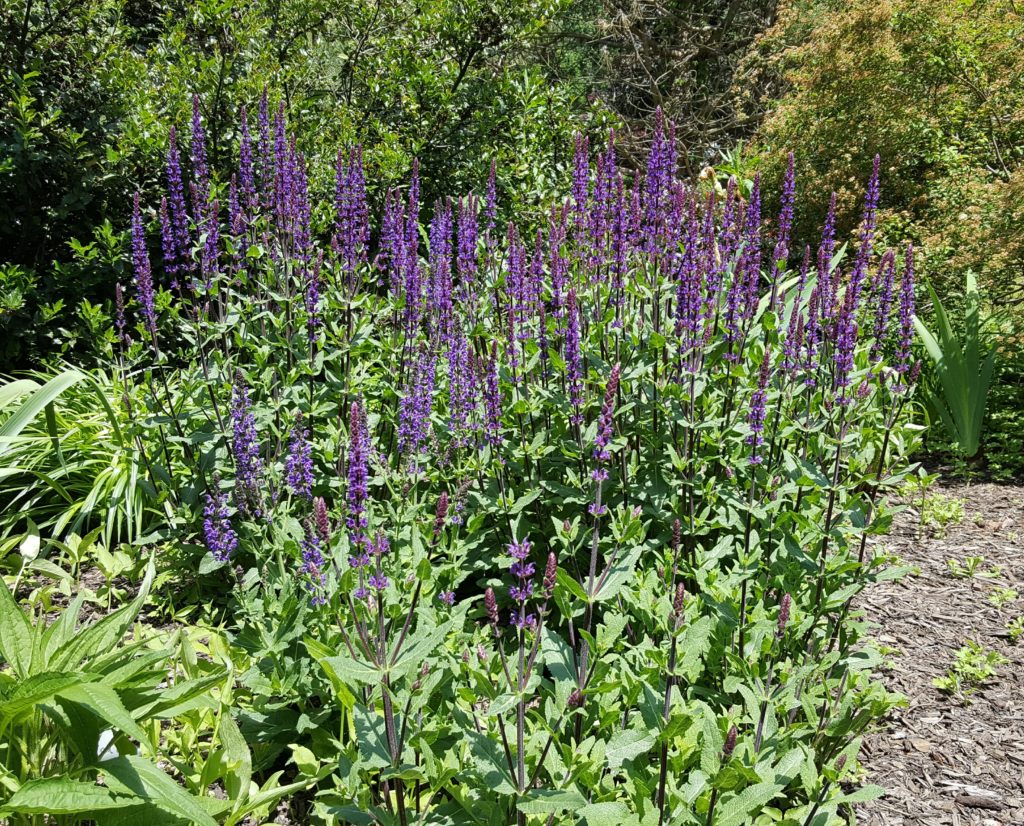
Salvia nemorosa (Meadow sage). Zones 3-8, full sun. Salvias are clump-forming upright plants of 18-24 inches in height. They produce dark blue-purple flower spikes from early spring to fall. Dead-heading prolongs the blooming period. Their aromatic foliage keeps the deer away. Young growth will start in early fall, so cut off the old stems to let the new leaves receive the sunlight.
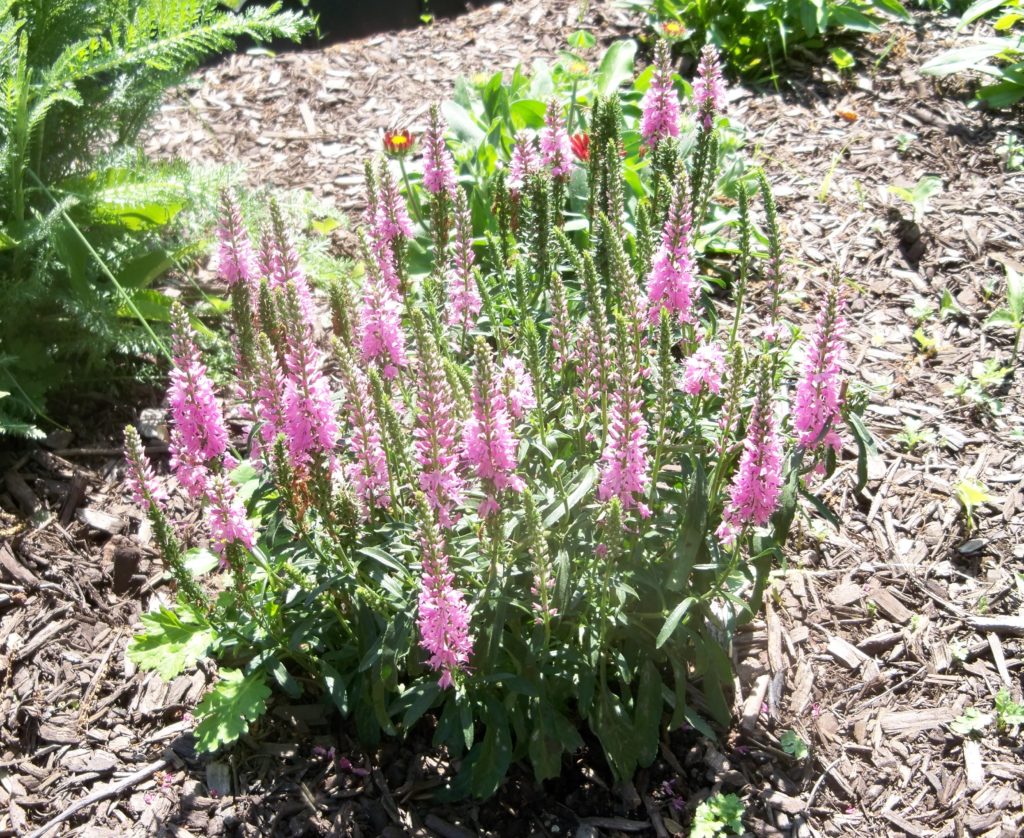
Veronica spp. (Speedwell). Zones 3-9, full sun, 3-48 inches tall and 8-24 inches wide, depending on varieties. Veronica is a low-maintenance perennial that blooms in spring with spikes of blue, purple, white or pink flowers. It is one of the long blooming deer resistant perennials. Deadheading will encourage reblooming. Picture shown above is Veronica Aspire, 6-12 inches tall.
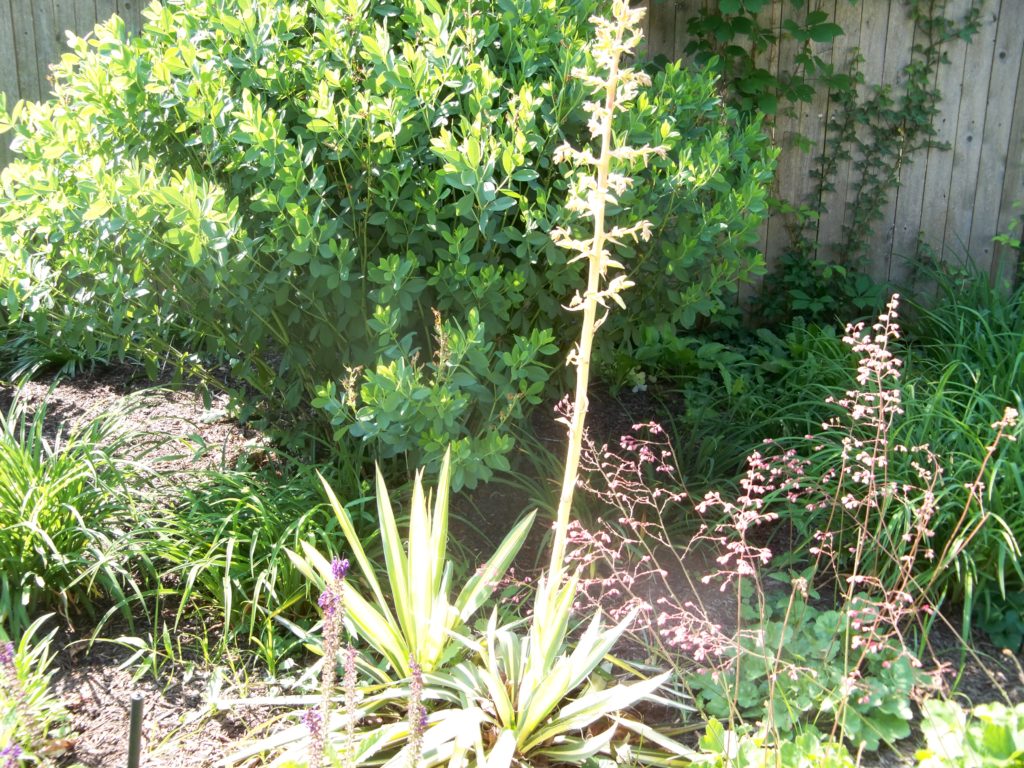
Yucca filamentosa (Color Guard). Zones 4-10, full sun, 2-3 ft tall and 3 ft wide. Yuccas have the look of a tropical plant, yet they are evergreen. Their leaves are sword-like, creamy yellow with green margins. In summer, they produce many ivory white flowers on a 5 ft stalk. Deer and rabbits do not bother them. They are also drought tolerant. Daughter plant often branches out from the parent. It takes many year to mature before it produces flower stalk. They are care-free, just cut off the flower stalk when it finishes blooming.
Other deer resistant plants
For a list of deer resistant annuals, please go to this page.
